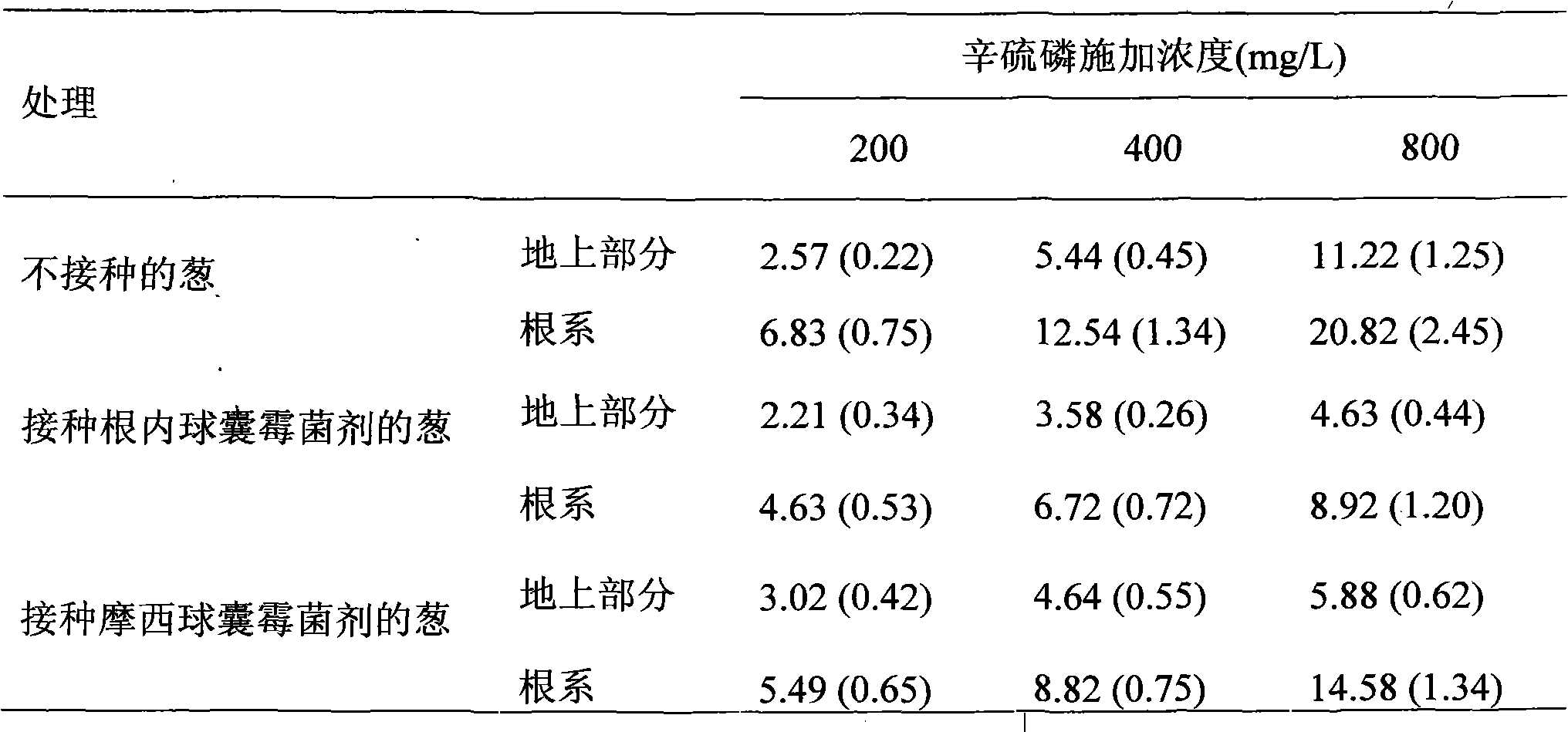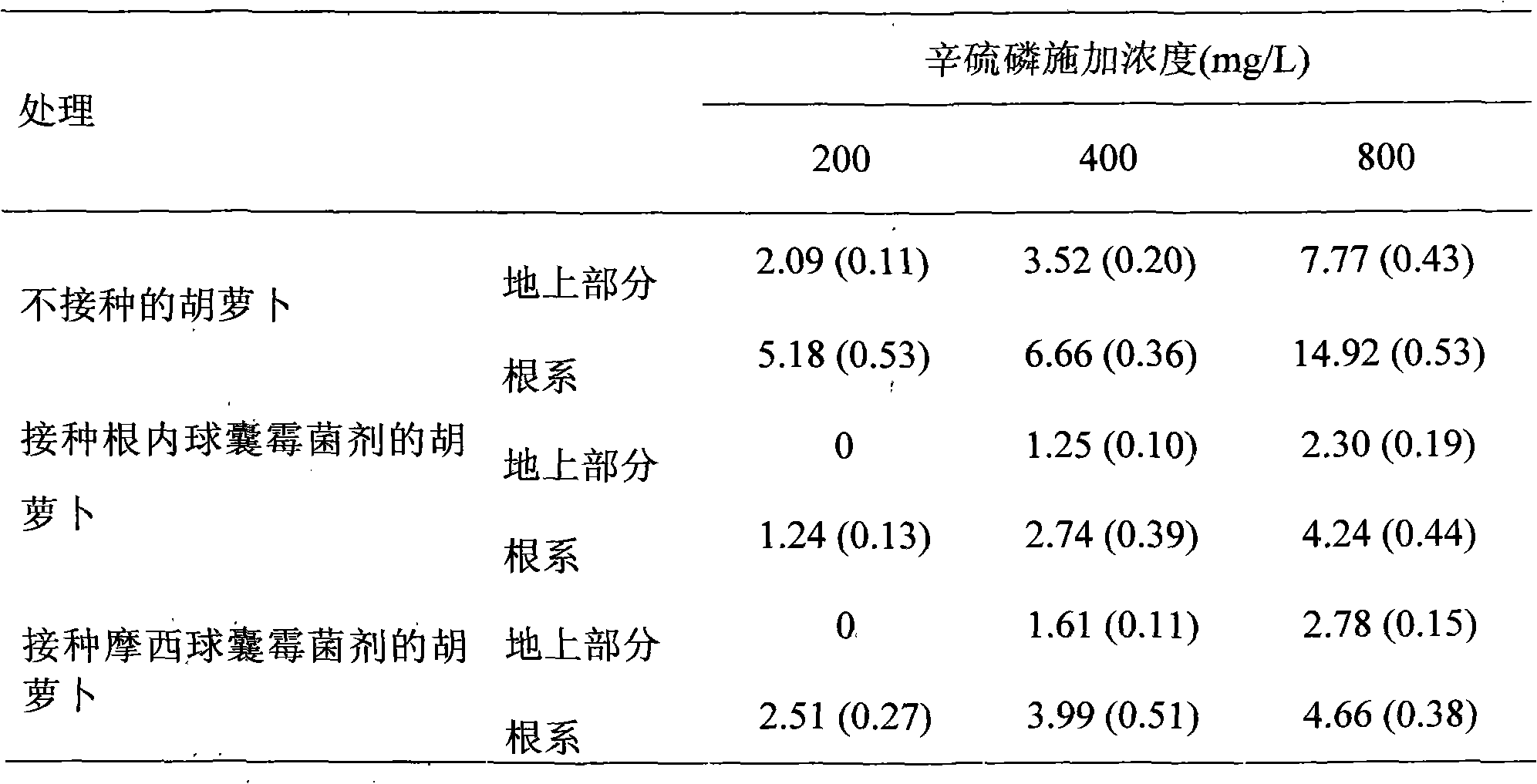Method for reducing vegetable phoxim residue by utilizing glomus mosseae or glomus intraradices
A technology for Glomus mossii and Glomus rhizogenes is applied in the field of reducing phoxim residues in vegetables, can solve the problems that do not involve Glomus mossii or Glomus Root and the like, and achieves that the method is easy to master, reduces residues, The effect of improving nutritional status
- Summary
- Abstract
- Description
- Claims
- Application Information
AI Technical Summary
Problems solved by technology
Method used
Image
Examples
Embodiment 1
[0032] Embodiment 1 The method for reducing phoxim residues in green onions by using Glomus mosesi or glomus in root fungi
[0033] (1) Expansion of Glomus mosei or Glomus intrarhizoi
[0034] Glomus mosseae BEG 167 or Glomus intraradices BEG 141 are provided by China Agricultural University, Glomus mosseae and Glomus intraradices have been registered and preserved in the European Culture Collection Center, and the BEG 167 and BEG 141 are the accession numbers.
[0035] Sieve the river sand and peat through a 1mm fine sieve and sterilize at 121°C for 2 hours, then mix and stir the river sand and peat at a volume ratio of 1:1 to form a matrix . Inoculate Glomus moses or Glomus intraradices respectively with the inoculum amount of 5% by mass in the matrix, then add 20% water in the matrix, sow the seeds of Sudan grass, and Sudan grass grows Pour 1 / 4 strength Hoagland (Hoagland) nutrient solution once every 3 weeks according to 10% of the mass of the substrate. This nutrient s...
Embodiment 2
[0053] Embodiment 2 The method for reducing phoxim residues in carrots by using Glomus mosesi or Glomus in root fungi
[0054] (1) Expansion of Glomus mosei or Glomus intrarhizoi
[0055] With (1) in embodiment 1.
[0056] (2) Method for reducing phoxim residues in carrots with Glomus moses or Glomus in root fungi
[0057] A. Test materials and methods
[0058] The variety of carrot is Changfeng brand super three red five-inch ginseng. Other steps are all the same as A in embodiment 1.
[0059] B. Test plan
[0060] Carrot leaves 2 seedlings per pot. The growth period is 130 days. Other steps are all the same as B in Example 1.
[0061] C. Test results
[0062] The results showed that the root mycorrhizal infection rate of carrots inoculated with Moses glomus or intraroot glomus was much higher than that of carrots without inoculation, and the infection rate was as high as 70%. The phosphorus nutrition of carrots was improved, and the phosphorus contents in shoots and...
PUM
 Login to View More
Login to View More Abstract
Description
Claims
Application Information
 Login to View More
Login to View More - R&D
- Intellectual Property
- Life Sciences
- Materials
- Tech Scout
- Unparalleled Data Quality
- Higher Quality Content
- 60% Fewer Hallucinations
Browse by: Latest US Patents, China's latest patents, Technical Efficacy Thesaurus, Application Domain, Technology Topic, Popular Technical Reports.
© 2025 PatSnap. All rights reserved.Legal|Privacy policy|Modern Slavery Act Transparency Statement|Sitemap|About US| Contact US: help@patsnap.com



